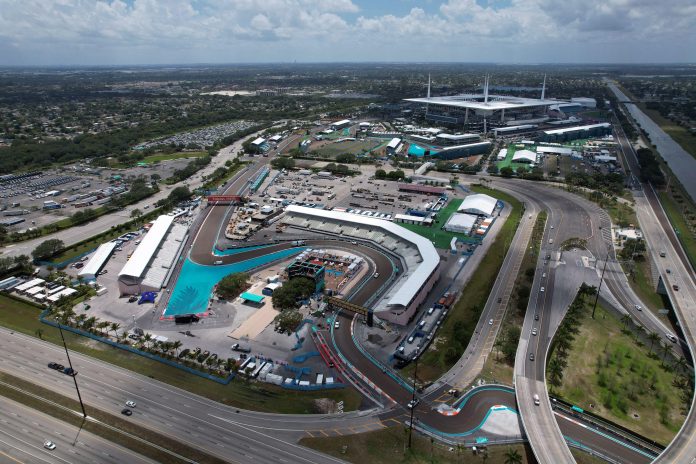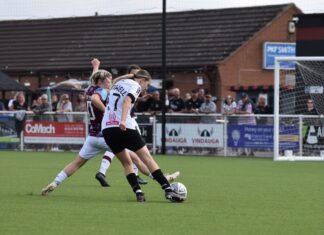
With an enthralling race in Miami, one to come in Las Vegas and the Netflix effect all spiking viewing figures for Formula 1 in the United States, it appears that the sport has finally cracked America.
Viewers of the 2022 Miami Grand Prix were treated to a dramatic finish this weekend – with Red Bull’s Max Verstappen’s victory at the inaugural event coming despite a last-gasp challenge from the rival Ferrari of Charles Leclerc.
And it was a star-studded event which saw many celebrities descend on the paddock, as well as spicing up the Championship battle.
Yes boys!!! 🏆 Incredibly happy to win here in Miami 💪
No weekend is ever easy in F1, especially on a new demanding track like this one 🥵
That’s why I am all the more proud we were able to put it all together in the end, great work team @redbullracing 👏 pic.twitter.com/BrIUJU7n9D
— Max Verstappen (@Max33Verstappen) May 8, 2022
It’s been a long time coming – but the floodgates are open, and, with that, the gloomy memories of Indianapolis in 2005 will naturally begin to fade.
It looked set to be a triumphant day for Jarno Trulli. The Italian was thriving in his new seat at Toyota who, for the first time since joining the sport in 2002, had built a car capable of winning a race. The Italian, on the Saturday, exhibited his ferocious qualifying speed to take just his third pole position in F1.
But it was at the end of the formation lap, ahead of the race, that Trulli pulled into the pits, signalling to the 120,000 Americans in attendance that something wasn’t right.
Behind the Toyota driver, Kimi Raikkonen also pulled in, Jenson Button followed, and it became clear that multiple teams simply weren’t lining up at the start.
A chorus of jeers rung around Indianapolis Motor Speedway, as a confused audience demanded refunds, in shock at seeing a spread-out starting grid with just the Bridgestone tyre-shod Ferrari, Minardi and Jordan cars. These were the days before social media had taken off, so the crowd were not to know.
They weren’t to know that the Michelin-tyred teams were pulling out, due to tyre failures. The banked final right-hander leading on to the pit straight had seen Toyota’s Ralf Schumacher spear into a wall with an enormous impact. This was just one of several Michelin tyre failures throughout the weekend.
For context, we should explain that in 2005, Formula 1 teams were not permitted to change tyres during the race, except to replace damaged ones. This was the era of the tyre war, with the two manufacturers Bridgestone and Michelin supplying three and seven of the ten teams respectively.
Surely there were solutions to be found, weren’t there? One was never reached. The Bridgestone runners were not budging, for matters of sporting integrity. They would not vote in favour of allowing pit stops for one race only or deploying a makeshift chicane in the final corner.
And Michelin stood their ground, their teams refusing to accept the conditions proposed to them by the FIA, be it going slowly through the final corner, or even using the pit lane every lap. They would only race with a chicane installed. Performance is king in high-level sport, and this was something the Michelin teams simply weren’t prepared to sacrifice.
Michael Schumacher took the chequered flag from his Ferrari teammate Rubens Barrichello after the strangest start in F1 history, but nobody cared. The sport had been tarnished in the States, and this lasted for years.
Indianapolis remained on the calendar until the end of 2007, and even as the US Grand Prix returned in Austin, Texas for 2012, the sport still struggled to connect with the ordinary person. Only now are things beginning to change, and the general resentment towards the sport is beginning to dissipate.







